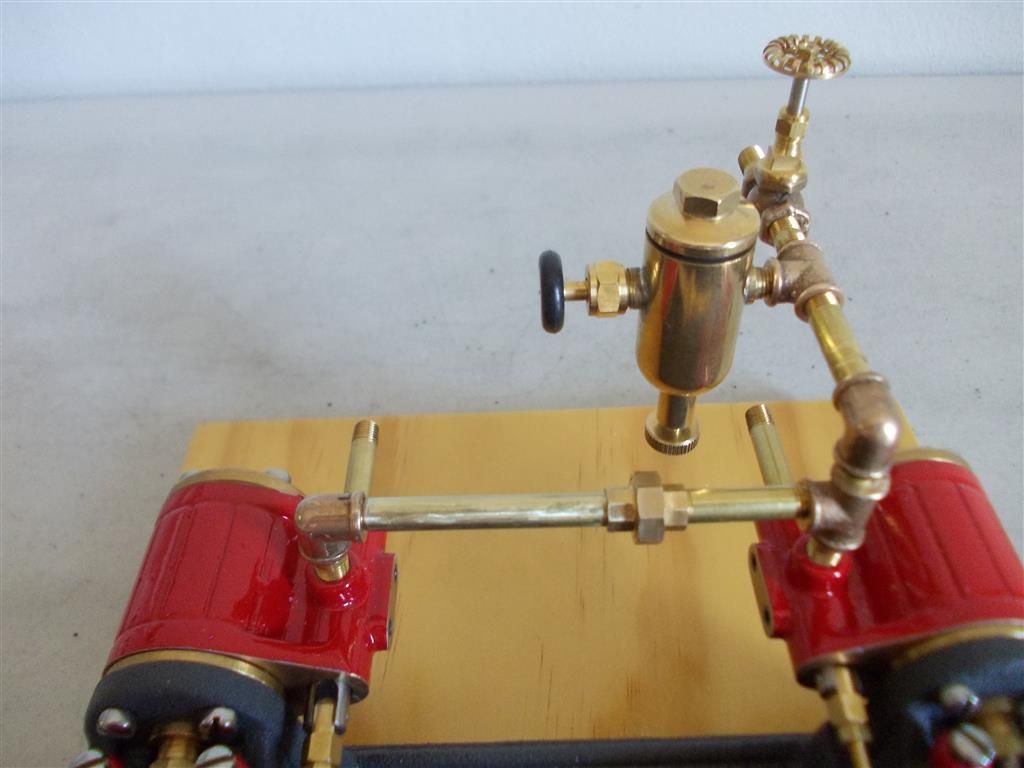I have had another attempt at fitting the manifold : I got it closer to the cylinders (it looks more elegant this way) by using shorter vertical pipes. I also got a much tighter fit on the tube union by experimenting with slightly different lengths of horizontal pipe. I can feel no air leaking from the tube union now and I did not have to use any sealant.
It still only runs on for about 6 revolutions after turning off the compressor so I guess this is as good as it gets. I will need to build another bigger base with some cabinet handles. I did not think of that when I fitted it to this small base. It is a pity that the only timber I can buy in Cairns is pine ; a nice piece of cedar or mahogany would look better,
Sorry, I should not have deleted the earlier photos.
1. Where can I buy some copper cups to catch the water from the exhaust ? I have seen them on youtube videos but I have no idea where to buy them.
2. Could I use (yellow) gas plumbers tape as a sealant ? It is rated for 100-250 degrees Celsius and would be a cheaper option .




Edited By Brian John on 12/10/2014 03:49:33
Edited By Brian John on 12/10/2014 03:52:29
Edited By Brian John on 12/10/2014 04:23:19
Ian S C.















